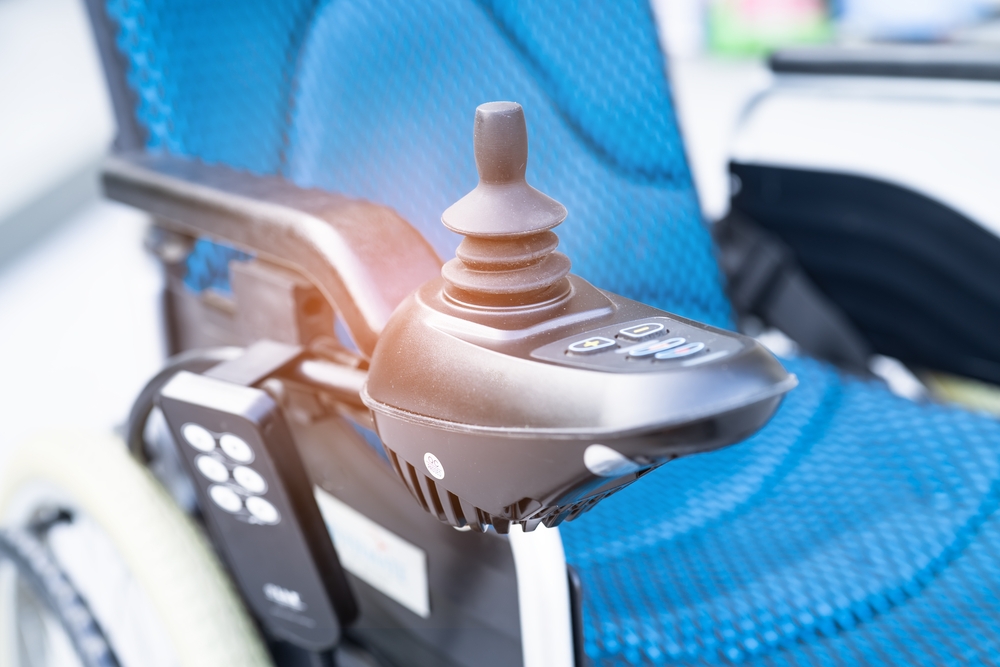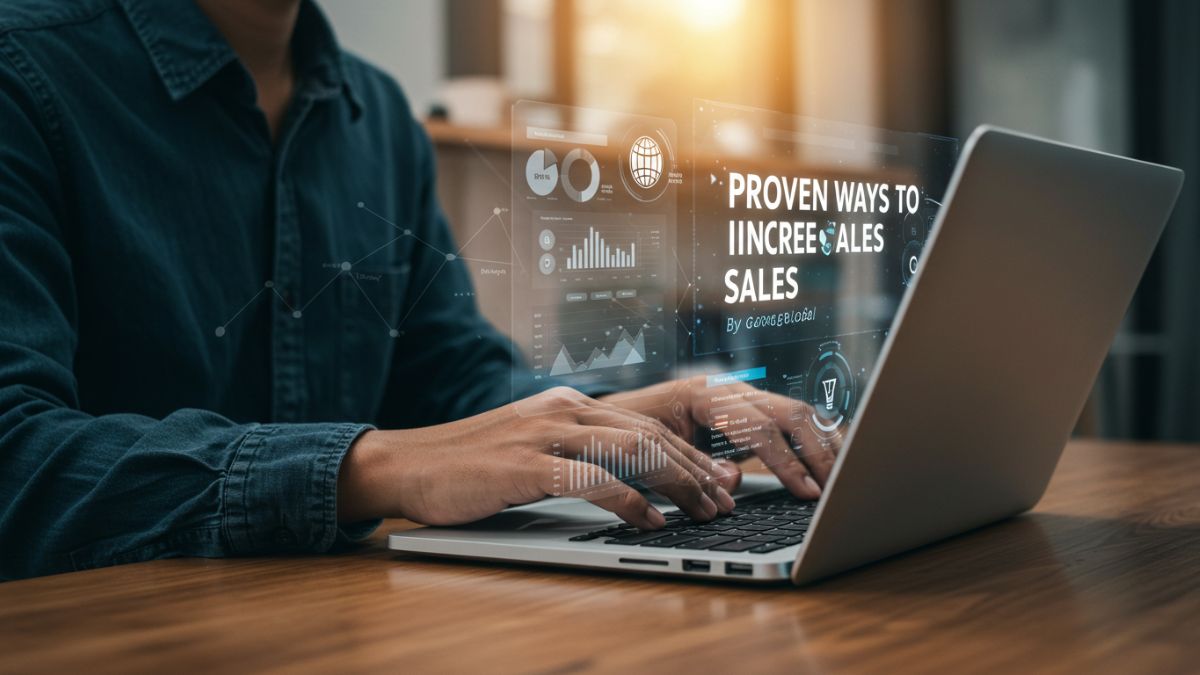TECHNOLOGY
The Technology Behind Power Chairs

Technology is impacting every sector of our existence, and mobility solutions are no exception. Those with mobility impairments can use power chairs as much more than just modes of transportation; instead, they act as symbols of independence, freedom, and accessibility. Over the years, the evolution of power chairs has been nothing short of remarkable, with amazing engineering, design, and accessibility features. That being said, you can learn more about the technology behind these revolutionary devices in further detail below.
Electric Motors and Drivetrains
Electric motors and drivetrain systems sit at the heart of every power chair. Modern power chairs are kitted out with highly effective electric motors that offer smooth and reliable propulsion. These motors tend to be powered by rechargeable lithium-ion batteries that boast long life cycles and higher energy densities when compared to traditional lead-acid batteries.
What’s more, motor control technology has advanced rapidly, leading to the enhancement of maneuverability and responsiveness of power chairs. Users are able to adjust their speed and direction accurately, thanks to variable-speed controllers that provide greater control of movements. Similarly, power distribution can be optimized via sophisticated algorithms, which makes for an efficient use of battery power.

Customization and Adaptability
Perhaps the most significant advancement in the field of power chair technology is the level of customization and adaptability that’s available to users. There’s a wide range of customization options for power chairs, meaning users can adjust them to suit their unique needs and preferences. Whether you’re looking to adjust armrests and footrests or your seat widths and depths, you can personalize your chair for optimal comfort and support.
Additionally, advancements in seating technology have completely changed the way in which power chairs accommodate users with complex mobility requirements. Power tilt, recline, and elevation are just some of the features that users can make the most of with power chairs. This helps them to relieve pressure, improve circulation, and enhance their overall comfort. Similarly, optimal posture can be accommodated via specialized seating systems and pressure relief cushions.
Intelligent Control Systems
The latest innovations in power chair technology focus on integrating intelligent control systems that enhance safety and usability. Sensors, cameras, and various other advanced technologies are used to create a seamless and intuitive driving experience for users.
For instance, ultrasonic sensors are used to detect obstacles and adjust the chair’s path accordingly to avoid collisions. Meanwhile, with adaptive driving controls, users are able to operate their chairs with joysticks, switches, head arrays, and other alternative inputs. This means that power chairs can effectively cater to individuals with limited dexterity or range of motion.
Connectivity and Accessibility Features
Power chairs are becoming increasingly connected and accessible, thanks to advancements in smart technology. In fact, an array of designs are kitted out with Bluetooth connectivity, meaning users are able to connect their smartphones or tablets to their chairs with ease. Not only does this contribute to convenience, but it also provides caregivers with the ability to monitor and manage chairs remotely.
Similarly, it also means that the chairs can be linked to smart home systems and assistive technology devices, which contributes to enhanced accessibility for disabled users. For example, voice-activated controls mean that users are able to verbally command their chairs, while built-in navigation systems can provide them with real-time guidance and assistance. This could be especially helpful in busy environments like airports or shopping malls.
Sustainability and Environmental Impact
Today’s society is more complex than it has ever been, which is why the sustainability of mobility solutions like power chairs is gaining importance. As battery technology advances, so does environmental sustainability, making these devices friends to the environment.
TECHNOLOGY
Proven Ways to Increase Online Sales by Garage2Global

In today’s rapidly growing digital economy, increasing online sales is more than just launching a website and waiting for customers to arrive. It requires strategy, innovation, and constant refinement. One company that’s making waves in this space is Garage2Global. Businesses across industries are now turning to this firm to increase online sales by Garage2Global’s effective digital growth strategies.
So, what exactly does Garage2Global do differently, and how can your business benefit from its approach? Let’s explore.
Introduction to Garage2Global
Garage2Global is a digital transformation company that helps businesses grow from a startup (garage) level to a global presence. Their primary focus is helping brands achieve scalable online sales growth through a mix of technology, marketing, automation, and customer-centric strategies.
Whether you’re a small online retailer or a growing service provider, you can leverage the methods used to increase online sales by Garage2Global and make your brand more profitable in today’s competitive online market.
Why Increasing Online Sales Requires Strategy
Online sales growth doesn’t happen by chance. Success depends on visibility, conversion rates, user trust, and brand engagement. Garage2Global brings these elements together using:
-
Optimized websites
-
Targeted marketing campaigns
-
SEO and content strategy
-
Conversion rate optimization (CRO)
-
Data-backed decision-making
Let’s break these elements down.
1. Build a Conversion-Optimized Website
One of the first steps to increase online sales by Garage2Global methodology is building a high-performing website. Your website is the face of your business. Garage2Global emphasizes clean design, fast load times, mobile responsiveness, and intuitive navigation.
An optimized site means your customers can find what they want quickly and check out without friction, reducing cart abandonment and increasing conversions.
2. Boost Organic Visibility with SEO
No matter how good your product or service is, customers need to find it. That’s where search engine optimization (SEO) comes in. Garage2Global creates SEO-friendly content, improves site structure, and conducts deep keyword research to help you climb search engine rankings.
The more visible your site is, the more potential customers you reach—ultimately helping you increase online sales by Garage2Global proven search strategies.
3. Use Targeted Digital Marketing Campaigns
Paid ads aren’t about reaching everyone—they’re about reaching the right people. Garage2Global helps businesses run smart campaigns on platforms like Google Ads, Meta (Facebook and Instagram), and LinkedIn, targeting specific audiences based on behavior, interests, and demographics.
This precision approach ensures ad spend turns into sales rather than just traffic.
4. Leverage Email Marketing and Automation
Email marketing remains one of the most effective tools for customer retention and repeat sales. Garage2Global utilizes email automation to send personalized product suggestions, discounts, and reminders, all timed to increase engagement and conversions.
For example, automated cart abandonment emails recover lost sales. Welcome series emails keep new subscribers engaged. All these tactics help businesses increase online sales by Garage2Globals through continuous touchpoints.
5. Enhance Customer Experience (CX)
Today’s customers expect fast responses, seamless service, and easy access to information. Garage2Global helps businesses implement live chat tools, personalized user journeys, and responsive support systems.
Improved CX builds trust and loyalty, which directly impacts your bottom line.
6. Analyze and Optimize Performance
Another crucial step to increase online sales by Garage2Global is data analysis. They believe in tracking everything—visitor behavior, click-through rates, sales funnels, and customer feedback.
With this information, businesses can quickly identify what’s working and what’s not. Constant improvement leads to better results and more sales over time.
7. Social Proof and User Reviews
Nothing builds trust faster than hearing from other satisfied customers. Garage2Global integrates user reviews, testimonials, and case studies into client websites and marketing materials. When potential buyers see that others trust you, they’re more likely to convert.
8. Influencer and Social Media Marketing
The rise of influencer marketing has created a new sales channel. Garage2Global connects brands with influencers who speak to their target audience, driving traffic and sales through authentic promotion.
Likewise, their team manages social media platforms to increase engagement, brand awareness, and referral traffic—all essential parts of the strategy to increase online sales by Garage2Globals.
Real-World Examples of Success
Several businesses have successfully grown using Garage2Global’s approach:
-
An online fitness equipment store saw a 220% increase in monthly sales after implementing SEO and PPC campaigns.
-
A skincare brand tripled its conversion rate within six months using site redesign, influencer marketing, and CRO.
-
A digital education platform increased customer retention by 50% through email automation and loyalty programs.
These real-world examples prove that structured, strategic action can drive substantial e-commerce growth.
Final Thoughts: Let Garage2Global Be Your Growth Partner
Growing your business online can feel overwhelming. With ever-changing algorithms, rising ad costs, and evolving customer expectations, it’s easy to lose focus. That’s why partnering with a growth expert like Garage2Global can make a massive difference.
They don’t just offer tools—they offer results.
From the first website audit to running high-converting ad campaigns and building retention systems, every step is designed to increase online sales by Garage2Global’s powerful and proven strategy.
TECHNOLOGY
Cross-Platform App Development by Garage2Global: Transforming Mobile Experiences

In a world where users interact with multiple devices daily, businesses can no longer afford to build apps tailored to just one platform. The solution? Cross-platform app development by Garage2Global—a streamlined, efficient, and cost-effective method that ensures your digital product works seamlessly across Android, iOS, and the web.
This article explores the benefits, tools, and business impact of Garage2Global’s cross-platform development services and why companies are increasingly turning to this model to future-proof their mobile strategy.
What Is Cross-Platform App Development by Garage2Global?
Cross-platform app development allows a single application to run on multiple operating systems using a shared codebase. Garage2Global specializes in this development approach by utilizing modern frameworks like React Native, Flutter, and Xamarin, helping clients reduce development time and cut costs without sacrificing performance or user experience.
Unlike native development, where separate codebases are created for each platform, cross-platform solutions save time and resources while maintaining quality and efficiency.
Why Businesses Choose Garage2Global
Garage2Global isn’t just a service provider—they’re a strategic partner. Their approach to cross-platform development combines innovation, technical expertise, and user-centric design. Here’s what sets them apart:
1. Time and Cost Efficiency
Writing and maintaining one codebase instead of two or three means faster development and lower costs. This enables startups and enterprises to launch products more quickly and with fewer resources.
2. Consistent UI/UX Across Platforms
Garage2Global places strong emphasis on delivering a cohesive user experience. Whether a user is on an iPhone, Android device, or desktop browser, they’ll get the same smooth, intuitive interface.
3. High-Quality Performance
Using the best tools and frameworks, Garage2Global ensures that cross-platform apps run just as efficiently as native apps. They focus on optimization, performance testing, and ensuring low latency and quick load times.
Tools Used by Garage2Global in Cross-Platform Development
To provide clients with top-tier results, Garage2Global relies on a suite of advanced tools and frameworks tailored for modern app development:
-
Flutter – Developed by Google, Flutter enables beautiful, natively compiled apps using Dart.
-
React Native – A robust open-source framework from Meta that allows development using JavaScript and React.
-
Xamarin – A Microsoft-supported framework ideal for building high-performance apps using C# and .NET.
-
Ionic – Great for hybrid apps with a strong focus on performance and design.
Each project is carefully assessed to choose the most appropriate technology stack, ensuring custom-fit solutions that scale.
Advantages of Cross-Platform App Development by Garage2Global
Choosing Garage2Global for cross-platform development brings a number of strategic benefits:
A. Single Codebase = Simpler Maintenance
With only one set of code to manage, bug fixes and feature updates become quicker and less complex. This reduces downtime and allows businesses to stay responsive to user feedback.
B. Wider Reach
Instead of developing different versions for iOS, Android, and web users, cross-platform apps allow businesses to reach a broader audience right from the start.
C. Faster Time to Market
Speed is everything in today’s digital economy. Garage2Global’s approach enables rapid prototyping and quicker deployment timelines, helping clients get ahead of their competitors.
D. Scalability and Flexibility
The architecture of cross-platform apps is designed to adapt easily. As your business grows, your app can evolve alongside it with minimal technical hurdles.
Real-World Success Stories
Several companies have leveraged cross-platform app development by Garage2Global to transform their digital offerings. Here are a few examples:
-
A fitness startup used Flutter with Garage2Global’s guidance to build a health tracking app. Within four months, their app was live on Android and iOS, achieving over 100,000 downloads.
-
A delivery service integrated Garage2Global’s cross-platform app with real-time tracking features, leading to a 30% boost in customer satisfaction.
-
An e-learning platform reduced their expected development cost by nearly half by choosing a single codebase strategy, making room for more features within the same budget.
These examples showcase how Garage2Global turns technology into a powerful business tool.
How Garage2Global Approaches Cross-Platform Projects
Garage2Global follows a structured yet flexible development process that ensures efficiency at every step:
-
Discovery & Consultation
Understanding your vision, goals, and target users to define a smart app strategy. -
UI/UX Design
Creating intuitive interfaces that offer a consistent look and feel across all devices. -
Development & Integration
Using top frameworks and APIs to build, test, and integrate core functionalities. -
Quality Assurance
Rigorous testing ensures the app is bug-free, fast, and secure. -
Post-Launch Support
Ongoing updates, optimizations, and analytics to keep your app competitive.
Future-Proofing Your App with Garage2Global
Technology is constantly changing—but with cross-platform app development by Garage2Global, your business stays ready for tomorrow. Whether it’s adopting AI tools, integrating wearable tech, or ensuring accessibility for all users, Garage2Global builds applications that are prepared to grow and adapt.
Their team also keeps up with emerging trends such as Progressive Web Apps (PWAs), offline-first development, and adaptive UI design—ensuring that your investment stays relevant and future-ready.
Conclusion: Why Garage2Global Is the Smart Choice
In an increasingly mobile-first world, businesses need to be present across all platforms. Cross-platform app development by Garage2Global offers an intelligent, affordable, and fast way to get there. From startups to established enterprises, Garage2Global helps brands launch powerful apps that work everywhere—without the usual complexity or cost.
TECHNOLOGY
Why Trwho.com is a Game-Changer in Online Content Discovery

In today’s digital world, content is everywhere. From articles and videos to podcasts and social media posts, the sheer volume of information can be overwhelming. You might find yourself scrolling endlessly, trying to sift through the noise to discover something truly valuable. Enter Trwho.com—a revolutionary platform designed specifically for those lost in the sea of online content.
Trwho.com simplifies your search for high-quality material tailored to your interests. It’s not just another aggregator; it’s a smart solution that transforms how you interact with information online. Whether you’re a casual reader or a dedicated researcher, Trwho.com promises to make content discovery easier and more enjoyable than ever before. Let’s dive into what makes this site so special!
The Problem of Content Overload
Every day, millions of new articles, videos, and podcasts flood the internet. It’s a relentless wave of information that can feel daunting to navigate.
Users are often bombarded with content that lacks relevance or quality. Finding what truly resonates becomes an exhausting chore rather than an enjoyable experience.
Social media platforms and search engines prioritize trending topics over personalized interests. This leads to endless scrolling without substantial discovery and engagement.
As a result, many individuals miss out on valuable insights buried beneath mountains of irrelevant material. The quest for meaningful content often feels like searching for a needle in a haystack.
This struggle is real and affects everyone—from casual browsers to professionals seeking knowledge. With so much noise around us, it’s easy to feel lost in this digital jungle where quality gets overshadowed by quantity.
Introducing Trwho.com – The Solution to Content Discovery
In a digital landscape overflowing with information, finding the right content can feel like searching for a needle in a haystack. Trwho.com emerges as an innovative beacon amidst this chaos.
This platform reshapes how users discover, engage with, and consume content online. By leveraging advanced algorithms and user preferences, it curates personalized recommendations tailored to individual tastes.
Trwho.com eliminates the frustration of endless scrolling through unrelated articles or videos. Instead, it connects users directly to what matters most to them.
Its intuitive interface ensures that navigating vast amounts of data is simpler than ever before. With Trwho.com, discovering relevant content becomes not just easier but also more enjoyable for everyone involved.
How Trwho.com Works
Trwho.com simplifies content discovery with an intuitive interface designed for ease of use. Users can input their interests, and the platform curates personalized content from various sources.
The algorithm analyzes user preferences in real-time, ensuring that each suggestion is relevant and engaging. This means no more sifting through endless articles or videos; Trwho.com brings the best options to your fingertips.
Additionally, it constantly learns from interactions. As you explore different topics, the recommendations evolve to match your changing tastes.
It also integrates seamlessly with social media platforms, allowing users to share their favorite finds effortlessly. Collaborative features enable friends and colleagues to discover content together as well.
This innovative approach transforms how we consume information online, making it a breeze to stay informed without feeling overwhelmed by choices.
Features and Benefits of Trwho.com
Trwho.com offers a streamlined approach to content discovery that sets it apart from traditional platforms. Its intelligent algorithm curates personalized recommendations based on user preferences, saving time and effort.
Users can explore a vast array of topics tailored to their interests. Whether it’s trending news or niche blogs, Trwho.com ensures relevant content is just a click away.
The platform’s intuitive interface makes navigation effortless. With easy-to-use filters, finding specific articles becomes simple and quick.
Another standout feature is the community engagement aspect. Users can share insights on discovered content, enriching the overall experience through collaborative learning.
Notifications keep users updated with fresh content without feeling overwhelmed. This balance enhances satisfaction while minimizing information overload, allowing for focused exploration in an age where distractions abound.
Why Users are Raving About Trwho.com
Users are buzzing about Trwho.com for a variety of compelling reasons. The platform simplifies the often overwhelming task of finding quality content online. With just a few clicks, users can discover tailored articles and videos that resonate with their interests.
The intuitive interface is another highlight. People appreciate how easy it is to navigate through endless streams of information without feeling lost. This streamlined approach saves time and frustration.
Moreover, Trwho.com employs advanced algorithms that learn from user preferences, providing increasingly relevant recommendations over time. Users love this personalized touch, which makes each visit feel unique and engaging.
Community features also play a significant role in its popularity. Users can share insights and discuss findings within the platform, creating an interactive experience that fosters connection among like-minded individuals.
Success Stories from Trwho.com Users
Many users have found their content journey transformed through Trwho.com. For instance, a small business owner discovered relevant articles and insights that helped them tailor their marketing strategy effectively. The result? A noticeable increase in customer engagement and sales.
Another user, a freelance writer, shared how the platform streamlined their research process. With curated content suggestions, they could focus more on writing rather than sifting through endless information online. This boost in productivity led to timely submissions and happier clients.
Educators also praise Trwho.com for finding valuable resources quickly. They’ve enhanced lesson plans using tailored content that resonates with students’ interests.
These stories highlight just how powerful effective content discovery can be when it’s done right. Users are not only saving time but unlocking new opportunities across various fields thanks to Trwho.com’s innovative approach.
The Future of Content Discovery with Trwho.com
As we look ahead, the landscape of content discovery is set to evolve significantly with Trwho.com at the forefront. This platform is designed to streamline how users find relevant and engaging material across various niches.
With advancements in AI and machine learning, Trwho.com will harness these technologies to personalize user experiences even further. Imagine a tool that not only understands your interests but anticipates what you might want next.
The integration of social sharing features promises a more collaborative approach to discovering content. Users can easily share their finds or seek recommendations from friends, creating a vibrant community around shared interests.
Moreover, as new formats like video and interactive media gain traction, Trwho.com adapts accordingly. It ensures that users are always connected with the latest trends while enjoying diverse types of content tailored just for them.
Conclusion
The rise of digital content has transformed how we consume information. But this shift hasn’t come without its challenges. With the internet flooded with articles, videos, and posts, users often feel overwhelmed. That’s where trwho.com steps in as a beacon of clarity amidst the chaos.
Trwho.com is designed to simplify your online experience. It curates content based on your interests and preferences, ensuring that you find what truly matters to you without sifting through endless options.
How does it work? Trwho.com employs advanced algorithms and user-friendly features that tailor recommendations specifically for each user. The platform learns from your interactions and continuously refines its suggestions, making every visit more personalized than the last.
One of the standout features of trwho.com is its intuitive interface. Users can easily navigate through categories or use powerful filters to hone in on specific topics. This level of customization enhances engagement while saving time—an invaluable benefit in today’s fast-paced world.
Users have been quick to share their enthusiasm about trwho.com. Many appreciate not only how seamlessly it fits into their daily routines but also how effectively it uncovers hidden gems they might otherwise miss. Testimonials highlight enhanced discovery experiences that keep them coming back for more.
Success stories abound within the community surrounding trwho.com. From bloggers finding inspiration for new posts to professionals discovering industry insights, users report meaningful changes in their content consumption habits—and overall satisfaction levels are high.
Looking ahead, it’s clear that platforms like trwho.com will shape the future landscape of content discovery even further. As technology evolves and our needs adapt, innovations will continue enhancing personalization efforts across various niches, making it easier than ever for individuals to connect with relevant material effortlessly.
As we embrace this dynamic era of online exploration together with tools like trwho.com at our fingertips, navigating through a sea of information becomes less daunting—transforming our relationship with digital content into one that’s enriching rather than overwhelming.
-

 GENERAL2 years ago
GENERAL2 years agoDiscovering the Artistic Brilliance of Derpixon: A Deep Dive into their Animation and Illustration
-

 Posts2 years ago
Posts2 years agoSiegel, Cooper & Co.
-

 FASHION2 years ago
FASHION2 years agoThe Many Faces of “λιβαισ”: A Comprehensive Guide to its Symbolism in Different Cultures
-

 Lifestyle2 years ago
Lifestyle2 years agoPurenudism.com: Unveiling the Beauty of Naturist Lifestyle
-

 Lifestyle2 years ago
Lifestyle2 years agoBaddieHub: Unleashing Confidence and Style in the Ultimate Gathering Spot for the Baddie Lifestyle
-

 HEALTH1 year ago
HEALTH1 year agoTransformative Health Solutions: Unveiling the Breakthroughs of 10x Health
-

 Entertainment2 years ago
Entertainment2 years agoGeekzilla Podcast: Navigating the World of Pop Culture, Gaming, and Tech
-

 Lifestyle11 months ago
Lifestyle11 months agoSandra orlow: Unraveling the Story of an Iconic Figure
